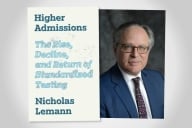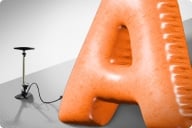You have /5 articles left.
Sign up for a free account or log in.
WASHINGTON -- The doors opened and the 600 people who had been hovering outside poured in. They acted fast, maneuvering their way to the front, wanting to be as close as possible to the stage. Loud, anticipatory chatter filled the minutes leading up to the act, but the crowd fell silent virtually instantaneously at the sound of the microphone check.
This may sound more like a rock concert than something akin to what it actually was: a plenary session at the Council of Graduate Schools' annual meeting Friday here at a Washington hotel. And the man responsible for generating all the excitement? Alan Alda, the actor, director and writer-turned-university curriculum creator.
Most attendees knew Alda (and were considerably starstruck) from his "M*A*S*H" fame or one of the dozens of films he's been part of. But Alda also has a considerable science journalism background, which he brought to the table when he and the State University of New York at Stony Brook decided to collaborate to form the Center for Communicating Science at the institution's School of Journalism in 2009. Alda had already worked with the university at writing conferences and as a faculty member of the Stony Brook Southampton MFA in creative writing and literature. He had been imploring that institution and others to communicate science more effectively, and those conversations led to the new center.
"There's a tremendous need for science to be communicated well," Alda said, recalling his experiences interviewing researchers for PBS's "Scientific American Frontiers." He found that people were much easier to understand and engaged when the pressure was off; when scientific jargon was replaced with human intimacy. "Their natural desire to help me understand became a two-person thing. It wasn't them lecturing an audience; it was a connection between two people."
Alda certainly practiced what he preaches: He had no trouble connecting with the audience while making the pitch to train graduate students in science to be better communicators. Nods and murmurs of agreement were frequent, as were eruptions of laughter. "We're on a blind date with science," he said. "Blind dates are treacherous. You don't know who this person is. You wonder, 'Should I call my grandma during coffee to get out of this?' "
Alda described his conversations with members of Congress who said that during panels with scientists, the politicians passed notes to each other asking if they understood what the scientists were talking about. (They didn't.)
At Stony Brook, classes in writing, distilling information and improvisation -- which five graduate students demonstrated at the plenary session -- are designed to train students to clearly communicate their work to the people who fund it, to other scientists, and to the general public. The courses begin next semester and are already over-subscribed; about 60 students have signed up. Some degree programs, such as ocean conservation and policy, are requiring their students to take the courses.
"It's not a frill, it's not an extra; it should be a core requirement for every graduate student who leaves in the 21st century," said Howard Schneider, dean of Stony Brook's journalism school. "Our aspiration at Stony Brook is to become the first university to require every graduate student to have some communication training -- starting with the sciences -- before they leave."
Judging by the anecdotes shared at the session, the improvisation technique worked for the five students who came to the conference. They had participated in six three-hour workshops with Alda in which he coached them on how to better communicate their scientific work. With their areas of study ranging from zooplankton ecology to atomic physics to semiconductor chemistry, the videos of them speaking before and after the workshops showed clear improvement. Before the workshops they were nervous, stiff and sometimes unintelligible, whereas after they were engaging, excited and clear.
Those students -- with the help of two deans from the audience -- demonstrated some of the improvisation exercises that they might do at Stony Brook. In one, called "Hitchhiker," the students sit in chairs organized like a car. The driver "pulls over" to pick up a hitchhiker who gets into the car and exhibits a certain characteristic, for instance, persistent sobbing. The other students in the car pick up on that characteristic and then take it on, the whole time conversing with one another.
The idea behind this and other exercises is that they teach the students not only to be more comfortable giving presentations or interviews or whatever the task at hand may be, but also that they learn spontaneously to communicate about their science with different people, to connect on a personal level. "Since you do know it, since it's your life's work, you can improvise around it because you know you're not going to get the science wrong. The science is in your bones," Alda said. "You can express it with more life now. It's more interesting to hear, I think."
The pitch to the graduate school officials certainly got people talking; after the session, many deans said they were going back to their colleges to suggest starting a similar program. One was Kim E. Barrett, a dean of graduate studies who got firsthand experience with the improvisation strategies when she was pulled on stage during the session and acted out a few exercises with the graduate students. She plans to return to the University of California at San Diego and talk to her dean about utilizing the institution's "outstanding" theater department. Barrett's initial nerves and discomfort in teaching science could have been eased by this kind of training, she said. "By the time I got to graduate school, I was terrified," she said. "Something like this would have been so fantastic because I've just had to learn over 30 years of pain and teaching medical students, who are not the most sympathetic audience, that you just have to connect."
Schneider acknowledged that many institutions might be reluctant to start programs similar to Stony Brook's because there is a "natural resistance" to adding to a curriculum or bogging down graduate students with more work. But colleges simply have to make time for this, he said. In June, Stony Brook is hosting a four-day retreat to teach professors more about how the program works and encourage them to start their own. Faculty will be immersed in the methods and techniques, and psychologists will assess how well the program works. Schneider's goal is to create a network of a half-dozen or more colleges across the country that are willing to try this out, and hopefully it will expand from there.
All of the graduate students had positive reviews of the experience, saying it made them more comfortable and confident talking to people. One student said she doesn't have to prepare for talks anymore; she already knows the information, so she just improvises the rest. Claire Allred, who studies atomic physics at Stony Brook, said the improvisation workshops made her more physically aware of what she's doing and where she's looking. "That's what communication is about," she said. "I thought I was good at it -- but apparently I wasn't that good."








